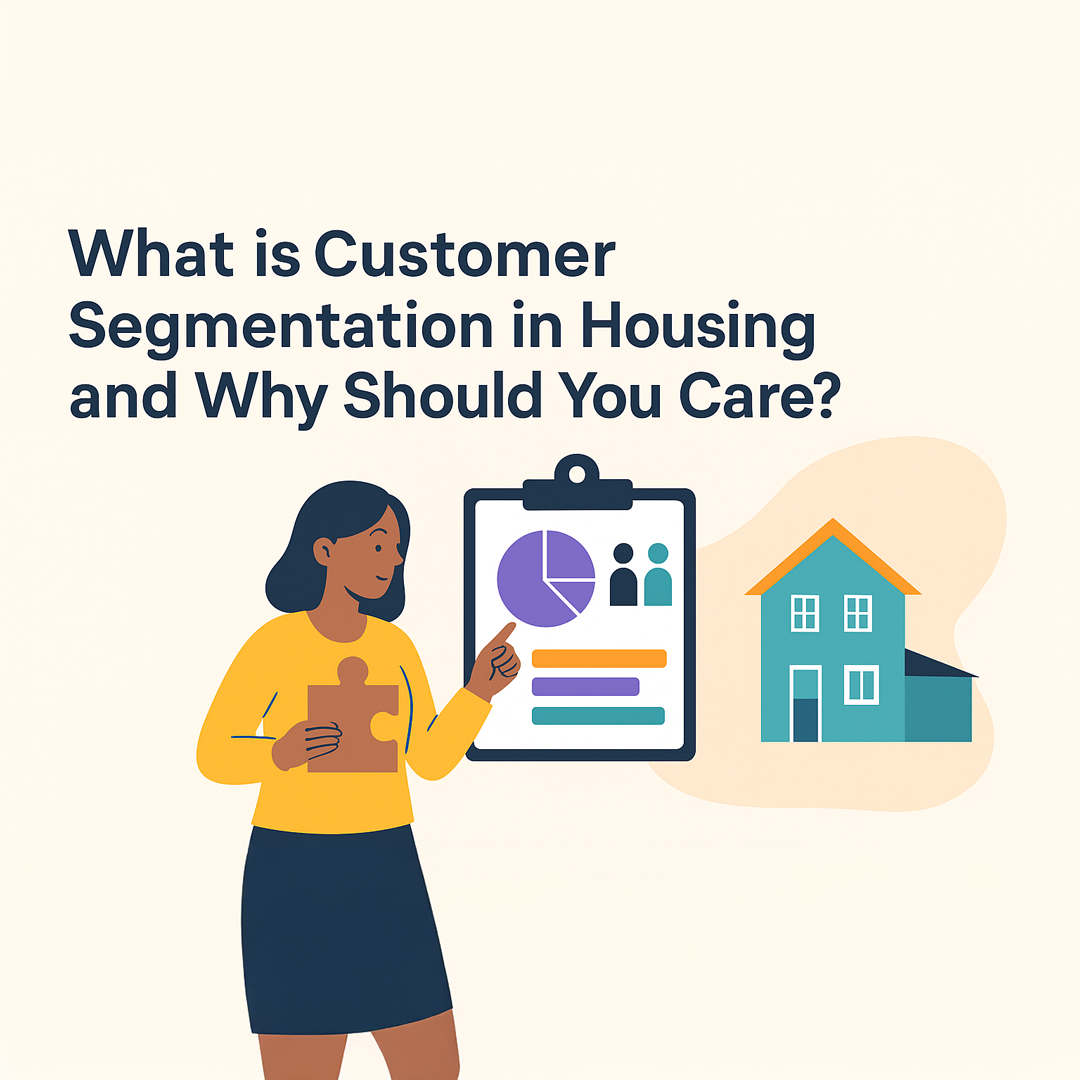What is Customer Segmentation in Housing and Why Should You Care?
If you work in housing, you’ll know that no two tenants are the same. Each household has its own story, its own challenges, and its own preferences. Yet many housing providers still take a “one-size-fits-all” approach when it comes to communication and service delivery.
That’s where customer segmentation comes in. It’s a way of understanding tenants more deeply, grouping them into categories based on their needs, behaviours, or circumstances. Done well, segmentation helps housing associations improve services, build stronger relationships, and use resources more effectively.
In this blog, we’ll break down what customer segmentation is, why it matters in housing, and how you can start using it to make a real difference.
What is Customer Segmentation?
In simple terms, customer segmentation means dividing a large and diverse customer base into smaller groups that share common traits. Retailers have been doing this for decades — tailoring offers and services to different shoppers. But it’s just as relevant in housing.
Instead of treating tenants as one big group, segmentation allows housing providers to recognise the diversity in their communities. For example, you might look at factors such as:
Demographics – age, household size, family structure
Financial situation – income levels, rent payment history, arrears risk
Communication preferences – digital-first vs. paper-based
Support needs – health conditions, accessibility requirements, care needs
By identifying these shared traits, you can group tenants in ways that make it easier to tailor your services.
Why Does Segmentation Matter in Housing?
It’s easy to see why segmentation is so powerful in a commercial setting, but what about housing? Here are some of the key reasons it matters:
1. Better Service Delivery
When you understand different tenant groups, you can design services that genuinely meet their needs. For example, families may value quick repairs and playground facilities, while older tenants may place more importance on accessibility and safety.
2. Improved Communication
We all have different ways we like to receive information. Some tenants may be happy with texts and emails, while others prefer printed letters or phone calls. Segmenting by communication preference avoids frustration and ensures key messages actually get through.
3. Smarter Use of Resources
Segmentation helps providers target support where it’s needed most. Instead of spreading resources thinly, you can focus on groups at higher risk — for example, tenants who may be struggling financially and need proactive arrears support.
4. Stronger Relationships
When tenants feel understood and supported, trust grows. That leads to higher satisfaction, fewer complaints, and a stronger sense of community.
Real-World Examples of Segmentation in Action
So, what does segmentation actually look like in practice? Here are a few examples relevant to housing associations:
Preventing Arrears: By identifying tenants who are more likely to fall behind on rent, you can reach out early with financial advice or flexible payment options. This prevents issues escalating and reduces the costs of chasing arrears later.
Digital vs. Non-Digital Tenants: Some tenants are confident using online portals, while others may struggle with technology. Segmenting by digital confidence means you can offer training and alternative support where needed, without leaving anyone behind.
Designing Services Around Households: A single parent family will have very different housing needs compared to a retired couple. Segmentation allows you to design policies and services that reflect those differences.
Each of these examples shows how segmentation can turn raw data into practical action.
The Benefits for Housing Associations
Beyond the immediate improvements in service, segmentation has wider benefits for housing providers:
Higher Tenant Satisfaction – tailoring services makes tenants feel listened to.
Reduced Complaints – addressing needs more effectively means fewer issues escalate.
Evidence for Regulators – segmentation data shows you are proactive and tenant-focused.
Long-Term Savings – by preventing problems early, you avoid costly interventions later.
Put simply, segmentation is about working smarter, not harder.
How to Get Started with Customer Segmentation
The idea of segmentation can feel overwhelming if you’re new to it, but it doesn’t have to be complicated. Here are a few practical steps to get going:
Start with the Data You Already Have
Most housing providers already collect valuable information about tenants. Rent records, repair requests, and demographic details can all form the basis of segmentation.Gather New Insights
To really understand your tenants, go beyond the basics. Surveys, interviews, and tenant profiling exercises give you deeper insight into needs and preferences.Combine Quantitative and Qualitative Data
Numbers tell you what is happening, while stories explain why. Using both together creates a fuller picture of your tenants’ realities.Apply Segmentation to Real Decisions
Don’t let segmentation sit in a report. Use it to shape communications, design services, and inform strategy. Even small, practical changes can have a big impact.
Final Thoughts
Customer segmentation isn’t about putting people in boxes. It’s about recognising diversity and responding more effectively. For housing associations, it’s a way to balance fairness with efficiency — ensuring every tenant feels valued while making the best use of limited resources.
By taking the time to understand your tenants as distinct groups, you can improve services, strengthen relationships, and build healthier communities.
At Viewpoint Research, we specialise in helping housing associations gain these kinds of insights. Through tenant profiling, surveys, and tailored research, we provide the evidence you need to make smarter decisions. If you’d like to explore how customer segmentation could benefit your organisation, we’d love to chat.

